It took Matt Lindstedt nearly 10 years to determine whether his new direction with Advanced Plating Technologies was working.
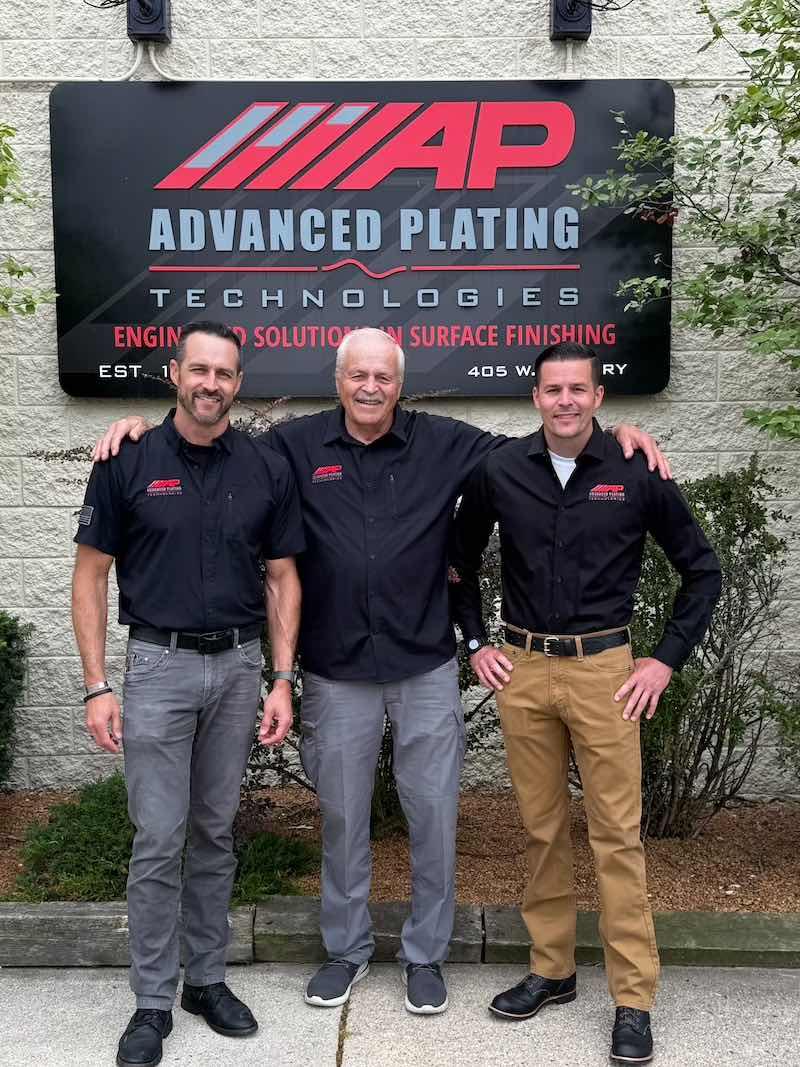 Matt, John, and James Lindstedt.After the 2009 decision to reconfigure how the Milwaukee-based plating company worked with its customers and end OEMs, Lindstedt and his other family members often wondered if the new company direction was right.
Matt, John, and James Lindstedt.After the 2009 decision to reconfigure how the Milwaukee-based plating company worked with its customers and end OEMs, Lindstedt and his other family members often wondered if the new company direction was right.
“Those were hard years because you didn't know if what we were doing was working,” says Lindstedt, who succeeded his father, John, as president of the company. His brother, James, works alongside him as the Vice President of Engineering.
What Lindstedt did know was that the company wouldn’t survive unless drastic changes were made in its operations. Matt’s father, John, an industry legend and electroplating guru, had seen drastic changes over his 40 years in the industry. At the turn of the century, John was growing increasingly disenchanted with the challenges facing metal finishers in general and his company specifically.
“If things hadn’t changed back then, I was ready to shut it all down,” John says. “We were struggling with our business going overseas and with very low margins. Something had to change.”
Becoming More Than Just a Job Shop
And change it did for the company known as Artistic Plating since 1948, when John’s father and grandfather founded the company. They changed the name to Advanced Plating Technologies (APT) and set out to become much more than just an average metal finishing job shop. The vision became surface engineering underpinned by technical excellence.
Today, Matt Lindstedt cannot hide his excitement about the company's direction. Business is up, customer relationships are solid, and APT has become one of the most unique operations in the industry, offering surface finishing engineering expertise and unparalleled quality to its customers.
“It's like if you finally decide to start going in the gym after not exercising for years,” Matt says. “The hardest time is in the beginning when you're not seeing results. You ask, ‘Why am I doing this?’ You don't initially have tangible results, but if you stick with it, you start seeing results that affirm your direction in time.”
“I always say we will bleed for our customers,” Matt says. “We will do everything within our power to make something a success. And that's the culture we built here, where we will die trying.”
APT is today known for its expertise in conductive and functional coatings for numerous industries, such as medical, electric vehicle, defense, ammunition, firearm, power distribution and transmission, bearing, electronics, and telecommunications.
Today, the company has over 80 employees at its three facilities in downtown Milwaukee. It runs nine lines and specializes in loose-piece rack, barrel, vibratory plating, powder coating, and passivation services.
The Surface Finishing Engineers
 APT is today known for its expertise in conductive and functional coatings for numerous industries, such as ammunitions, firearm, medical, electric vehicle, defense, power distribution and transmission, bearing, electronics, and telecommunications.APT is modeled as a surface engineering firm offering technical support that includes new product design consulting and reverse engineering of existing metal finishing issues. Common areas of focus include reducing corrosion, wear, or adhesion failures, improving contact cycle life, and improving solderability, brazing, or ultrasonic welding.
APT is today known for its expertise in conductive and functional coatings for numerous industries, such as ammunitions, firearm, medical, electric vehicle, defense, power distribution and transmission, bearing, electronics, and telecommunications.APT is modeled as a surface engineering firm offering technical support that includes new product design consulting and reverse engineering of existing metal finishing issues. Common areas of focus include reducing corrosion, wear, or adhesion failures, improving contact cycle life, and improving solderability, brazing, or ultrasonic welding.
Matt says the company has shifted from being an order taker to immersing itself in the early stages of its customers' product design and engineering. APT has an engineering department led by James that routinely meets with customers to review their parts and offer guidance. Recommendations can range from slight specification modifications to a complete revamping of the finish and processing method.
Because of that engineering approach, many companies and their complex finishing problems have found their way to APT’s team to help them solve issues that have perplexed them for years. The Lindstedts and their team enjoy the challenge, even if it takes considerable resources upfront to determine the solution.
“I always say we will bleed for our customers,” Matt says. “We will do everything within our power to make something a success. And that's the culture we built here, where we will die trying.”
James says it is common for them to be presented with ‘problem parts’ from their customers.
“It’s parts that other platers have tried and failed to meet quality expectations, on-time delivery, adherence to specification, or a combination thereof,” he says. “These scenarios can be very daunting and frustrating, but it is truly where APT shines. Our team is always up, ready to roll up the sleeves and figure it out – and we do.”
“We consider learning our craft a career-long endeavor – there is no endpoint,” James says.
The Lindstedts say the “don't be afraid to fail” approach led them to revamp their business plan in 2009 and become more of a problem-solver for their customers. APT has spent months and even over a year solving a finishing issue a customer has brought them. Still, they say testing and learning more about electrochemical processes is just as valuable as winning the business.
“There are many times when we're starting a project that we look at it and say, ‘I don't know if this is going to work,’ or we don't know if we can solve the problem,” Matt says. “But we are honest with the customer and communicate we're going to try and develop a process on a best-effort basis. That’s how so many of our breakthroughs begin.”
Re-Inventing the Company and Getting Buy-In
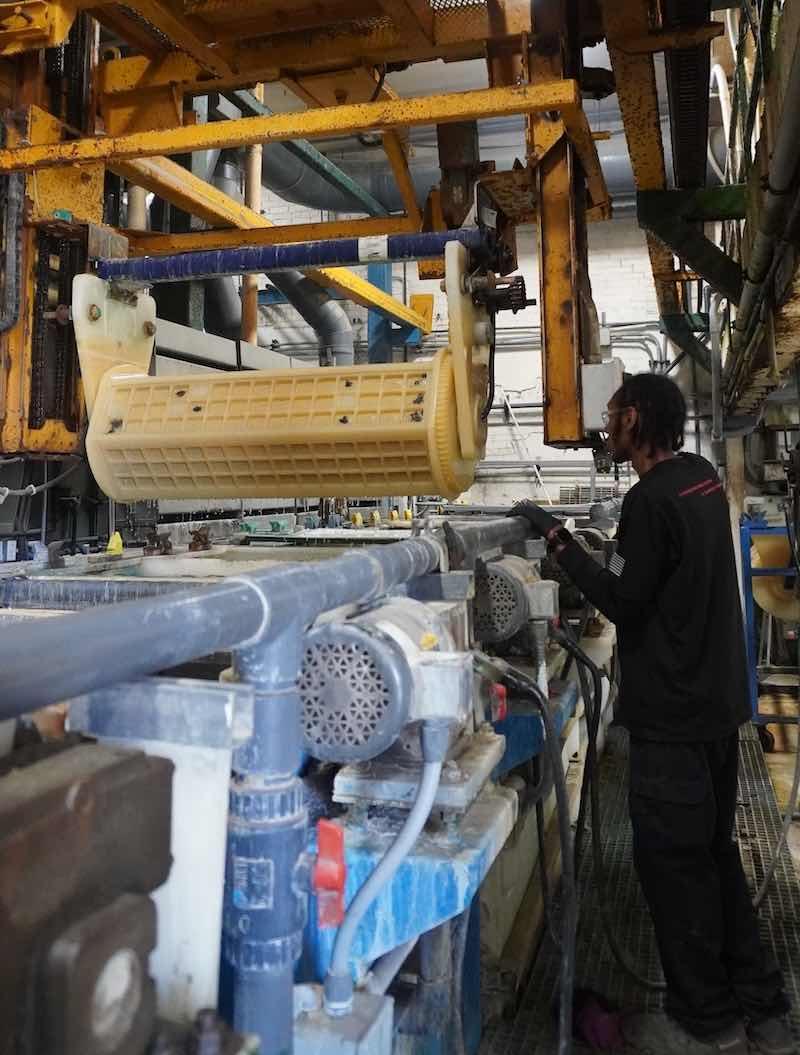 One of the challenges for Matt, James, and John when they started re-inventing the company in 2009 was getting buy-in from everyone on the team as they began to change the culture and customer base. The challenges became larger and the hills steeper as they headed down the path of improvement. Matt says it took time to change the culture, and it was not an easy path; however, through perseverance, they have adapted to the new way of doing business.
One of the challenges for Matt, James, and John when they started re-inventing the company in 2009 was getting buy-in from everyone on the team as they began to change the culture and customer base. The challenges became larger and the hills steeper as they headed down the path of improvement. Matt says it took time to change the culture, and it was not an easy path; however, through perseverance, they have adapted to the new way of doing business.
“The culture here today is one where we get jazzed when we solve problems —even if we fail, but we learn something,” he says. “And if you're excited about learning if you're excited about being able to do something that we haven't done as a company before, and then even if it didn't make the job a success, you put that in your quiver, and that's an arrow you have for the next problem.”
A case in point is a new customer APT took on over a year ago and has quickly become one of their top clients. The medical contract manufacturer brought them a perplexing part with unique assembly requirements that had been a problem for this company for over 10 years. APT relied on lessons learned within the ammunition industry, and a unique process developed years earlier that was key to unlocking the solution.
Matt says that trial and error from previous projects—both those that worked and those that didn’t work while transitioning to their surface engineering business plan—helped them come up with a perfect solution for this medical customer. They reverse-engineered the part, formulated part-specific chemistry and tooling, and engineered/built an assembly test that modeled the end use in under 90 days.
In many cases, James says educating their customer is critical to success and a healthy working relationship.
“We consider learning our craft a career-long endeavor – there is no endpoint,” he says. “Providing insights into the nuances and mechanisms of metals and metal finishing fosters future success and transparency.”
Making a Hard Decision on the Business Direction
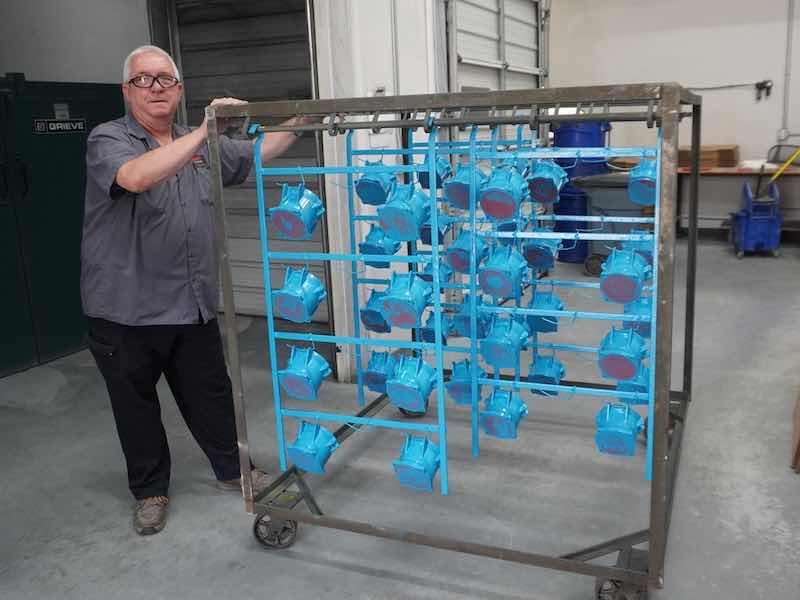 APT also performs powder coating operations in addition to electroplating.So, how did APT become what it is today, and what made it completely flip the script on its business model? Matt and John agree that it was on that fateful day in 2009 when things were at their bleakest, and many of their customers in the plumbing industry had offshored the finishing work.
APT also performs powder coating operations in addition to electroplating.So, how did APT become what it is today, and what made it completely flip the script on its business model? Matt and John agree that it was on that fateful day in 2009 when things were at their bleakest, and many of their customers in the plumbing industry had offshored the finishing work.
“The best thing that ever happened to the company was the great recession,” Matt says. “I say that to people, and they look at me like I'm crazy, but it happened at the right time for us.”
Matt had his mechanical engineering degree and had just returned from four years in the U.S. Air Force when he joined the old Artistic Plating in 2003. After a few years, John asked Matt to fill the open sales manager position, which is not what an engineer particularly wants to do.
“I was 110% against it because I am an engineer and not a salesperson,” Matt says. “I don't golf, and I'm not a glad-hander; it's just not my thing.”
“I recognized how ignorant some very big OEMs were to metal finishing, and these were reputable, large companies,” Matt says. “That shocked me.”
Matt filled the position as best he could until the recession of 2008-2009 hit every manufacturer hard, especially electroplaters. During that time, he quickly realized one thing about the OEMs he had been calling on: they knew very little about surface finishing and even less about how electroplating worked.
“I recognized how ignorant some very big OEMs were to metal finishing, and these were reputable, large companies,” he says. “That shocked me because I always had my dad and grandpa as a technical resource, and I figured most manufacturers would have a common level of understanding. I then realized that I didn’t have to be a salesman; I could simply be an engineer who talked to other engineers and tried to help.”
The Eureka Moment That Clicked
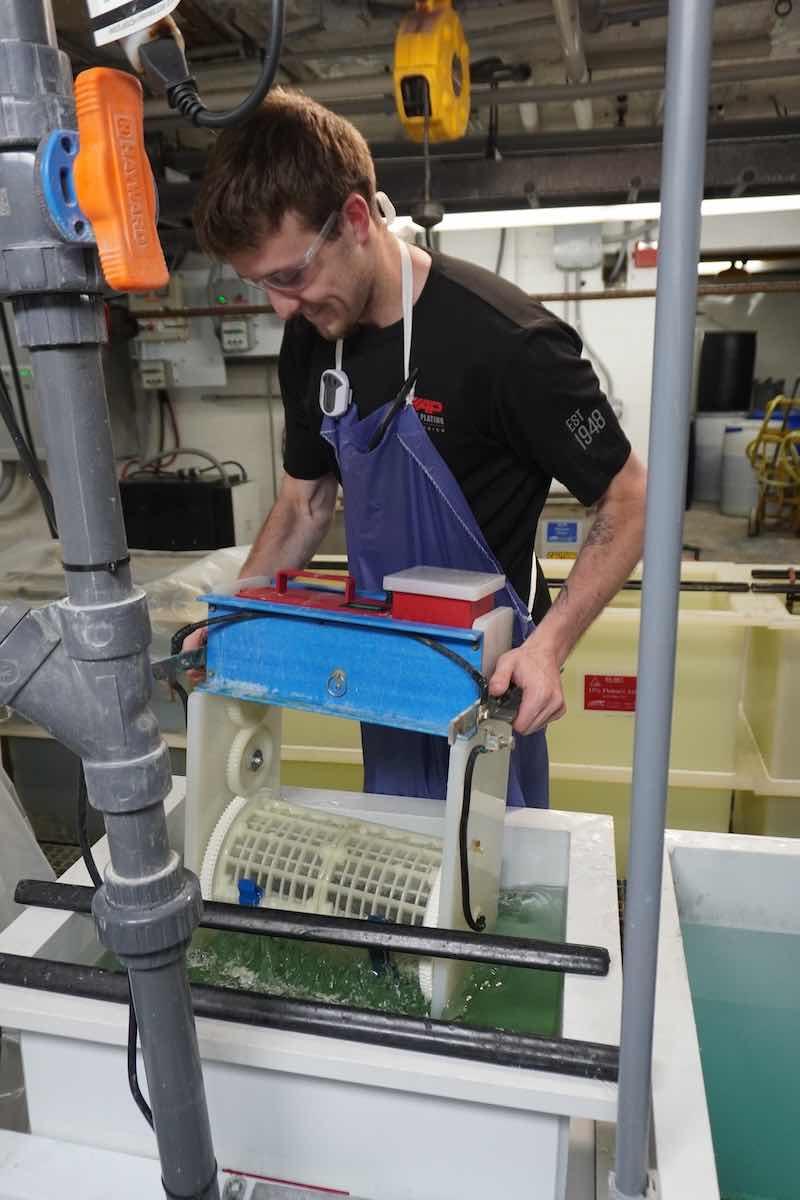 As the economy continued to slow, the Lindstedts had some reflective moments. They saw their business slipping away and thought about what they needed to do to save it.
As the economy continued to slow, the Lindstedts had some reflective moments. They saw their business slipping away and thought about what they needed to do to save it.
John says it was late afternoon in the fall of 2009 when Matt came to him with an idea. The son doesn’t remember exactly the day, but he knows it went from gray and dark to bright and hopeful.
It was all based on what Matt had seen in the field: when he called manufacturers about surface finishing needs, they often were misinformed or did not understand the foundational principles of metal finishing.
“The eureka moment clicked,” Matt says. “That's where the idea came from; if we're dealing with regional companies that need technical assistance with metal finishing, there's a fundamental void in American manufacturing today. They need a surface engineering resource just as much as a plating source.”
John says he listened to his son explain how he wanted to change the company—the first step was to drop the name Artistic Plating to the more focused Advanced Plating Technologies—and then went off to think about what he was proposing.
“I prayed on it,” John says. “But I knew we were in trouble.”
Matt and John agreed—and later with James when he also returned from college and his service in the U.S. Navy—that the new APT would have a long road ahead and that nothing would come easy.
“You will get kicked around and be unappreciated,” James says. “The companies that succeed and last are the ones that hang on, even though hanging on hurts.”
“You don't have success overnight,” Matt says. “It's not like you wake up and you say, ‘I'm going to do this and next year, and wow, it's a resounding success.’ It took damn near a decade until about 2017 when we started to have some success. Those were hard years because you didn't know if it was working.
James adds that the finishing industry requires a certain level of toughness.
“You will get kicked around and be unappreciated,” he says. “The companies that succeed and last are the ones that hang on, even though hanging on hurts.”
Learning From Mistakes
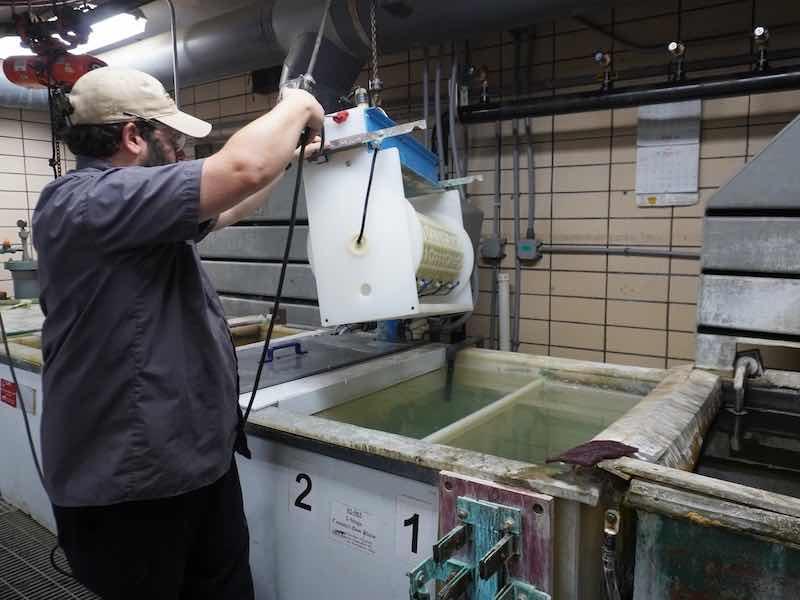 While the APT team had some quick successes with several companies that took them up on their offer to help engineer some parts, they also had some failures along the way, Matt says, such as going after the wrong industries that weren’t the right fit.
While the APT team had some quick successes with several companies that took them up on their offer to help engineer some parts, they also had some failures along the way, Matt says, such as going after the wrong industries that weren’t the right fit.
After several years, they realized they were winning over more customers than not, and the APT team became even more focused on the business plan and working on every detail of it.
“It's like a statue where you chisel a little here, a little there, a little off over there, a little this, and a little that,” Matt says. “You do it long enough, and all of a sudden, one day you wake up, and you've got a really clear vision of ‘This is it.’”
The most important pieces along the way have been the people and managers who run APT today. As the company became more successful and grew, weaknesses in departments and key company functions became apparent.
“That is the biggest thing I have learned about a company, which is that it must be bigger than anyone,” Matt says. John, Matt, and James agree that their current leadership and managers are the best they have ever had and have set the stage for continued growth within challenging industries.
“I'm perpetually paranoid about what piece of equipment might break, and we don't have a spare to keep us up and running,” Matt says. “Like most successful businesses are doing, we continue to invest in redundancy within our infrastructure.”
James says the day-to-day grind can make it easy to lose track of progress within the big picture.
“It is important to establish checkpoints and look up occasionally,” he says. “I use personal challenges from the past as markers to gauge where I am as an employee and where we are as a company.”
James uses them to motivate himself to handle what is currently on his plate.
“If I zoom out a bit, it is irrefutable that the company is far ahead of where it was in 2010 vs 2015 vs 2020,” he says. “The company has been on an uninterrupted upward trajectory regarding the physical plant, specialization within the industry, and, most importantly, employees. APT has never had such a talented and capable group of employees.”
Invest in the Business – Then Invest Some More
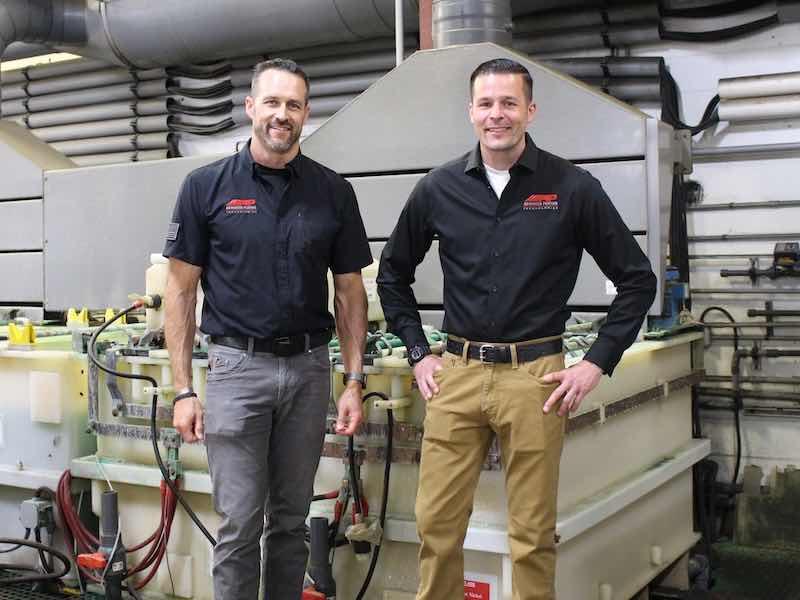 Matt and James have taken over day-to-day operations from their father, John.One key to APT's continued success is the company's continued investment in new technology, equipment, and processes that match its vision. Over the past decade, APT has been rebuilding and improving every part of its business, including a new waste treatment system, production lines, multiple boilers, more advanced plating chemistries, dozens of new rectifiers, and custom tooling and specialty plating barrels.
Matt and James have taken over day-to-day operations from their father, John.One key to APT's continued success is the company's continued investment in new technology, equipment, and processes that match its vision. Over the past decade, APT has been rebuilding and improving every part of its business, including a new waste treatment system, production lines, multiple boilers, more advanced plating chemistries, dozens of new rectifiers, and custom tooling and specialty plating barrels.
APT is currently spending considerable time, money, and energy integrating a new enterprise resource planning (ERP) software to steer the company into the future. Of course, that required a complete overhaul of their IT infrastructure system, which included running new fiber optic lines between the three buildings that form their manufacturing campus, as well as multiple high-performance servers, switches, and firewall systems.
It was also key for APT to build in redundancies in its IT system and ERP to keep the facility up and running no matter what challenges are thrown its way.
“I'm perpetually paranoid about what piece of equipment might break, and we don't have a spare to keep us up and running,” Matt says. “Like most successful businesses are doing, we continue to invest in redundancy within our infrastructure.”
Easier For New Hires to Train
The Lindstedts see the new technology that helps run their company, office, and finishing lines as a way to combat the growing problem of finding compatible workers to hire, train, and retain for longer periods.
“The days of having platers on the floor that are 10 and 20-year veterans isn't happening today,” Matt says. “If you get a new employee with plating experience, oh my gosh, that's amazing. We have to take people who have never seen plating lines, and we always joke that it is like field promotions are during a war. They start as a PFC, and two months later, they become generals commanding a battalion."
A new ERP system is expected to streamline many processes and possibly help a new hire adapt to the training program more quickly or, as Matt says, “shorten that learning cycle time.”
“One of the hardest decisions was when we had to part ways with a customer who had been in our top 10 for many years. However, they were pulling valuable resources away from the key direction we needed to focus on.”
Going forward, as Matt and James take on even more leadership roles and John enjoys his semi-retirement, the grandsons of the founder and sons of the industry icon say they are better prepared to meet the challenges that the manufacturing industry throws their way as they continue to establish themselves as surface finishing engineers, and not just platers.
Making Decisions on Industries or Customers That Don’t Fit
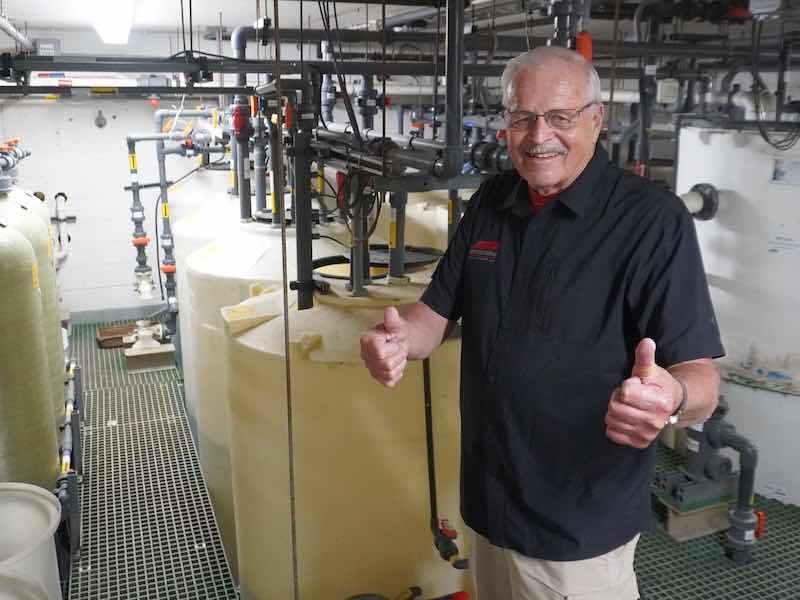 John Lindstedt still gets excited showing off the sophisticated wastewater treatment system he designed for APT.For APT, Matt says they have had to continually course correct, such as moving away from an industry that didn't work out. The best thing to do is recognize the error, stop, and refocus your resources. Other times, he says, it was with a specific customer, and maturity comes from recognizing that you've changed as a company and can't be everything to everyone.
John Lindstedt still gets excited showing off the sophisticated wastewater treatment system he designed for APT.For APT, Matt says they have had to continually course correct, such as moving away from an industry that didn't work out. The best thing to do is recognize the error, stop, and refocus your resources. Other times, he says, it was with a specific customer, and maturity comes from recognizing that you've changed as a company and can't be everything to everyone.
“Sometimes it's easy because it's a company that is a pretty obvious bad fit,” he says. “Those are the easy ones at first, but as we went down that path further, it got harder. One of the hardest decisions was when we had to part ways with a customer who had been in our top 10 for many years. However, they were pulling valuable resources away from the key direction we needed to focus on.”
As part of their evolving business plans, APT soon realized that this customer's demands were consuming too much of the limited resources in one of our core departments.
“We were not the best fit for them any longer,” Matt says. “A big part of the decision was because we wanted to continue to grow precious metals, and they were impeding our growing gold business. If there are two finishes we are focused on as a company, they are gold and silver.”
The Lindstedts say APT's culture has improved tremendously as the company narrows its focus and the employees understand its clear mission.
“Today, it is fun as we have matured out of our adolescence and now have a team focused on becoming the country's most technically proficient job shop,” Matt says. “In each of our departments, we have leaders helping us get better each day, and we have fun doing it on most days. Success brings success as we can now take bigger steps forward than in the past. I can’t wait to see what the next 1- years bring.”



































